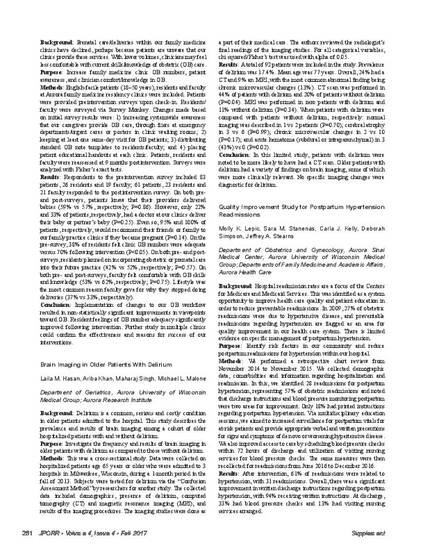
- postpartum hypertension,
- hospital readmission,
- discharge,
- quality improvement
Background: Hospital readmission rates are a focus of the Centers for Medicare and Medicaid Services. This was identified as a system opportunity to improve health care quality and patient education in order to reduce preventable readmissions. In 2009, 27% of obstetric readmissions were due to hypertensive disease, and preventable readmissions regarding hypertension are flagged as an area for quality improvement in our health care system. There is limited evidence on specific management of postpartum hypertension.
Purpose: Identify risk factors in our community and reduce postpartum readmissions for hypertension within our hospital.
Methods: We performed a retrospective chart review from November 2014 to November 2015. We collected demographic data, comorbidities and information regarding hospitalization and readmission. In this, we identified 28 readmissions for postpartum hypertension, representing 57% of obstetric readmissions and noted that discharge instructions and blood pressure monitoring postpartum were two areas for improvement. Only 18% had printed instructions regarding postpartum hypertension. Via multidisciplinary education sessions, we aimed to increased surveillance for postpartum vitals for at-risk patients and provide appropriate verbal and written precautions for signs and symptoms of de novo or worsening hypertensive disease. We also improved access to care by scheduling blood pressure checks within 72 hours of discharge and utilization of visiting nursing services for blood pressure checks. The same measures were then recollected for readmissions from June 2016 to December 2016.
Results: After intervention, 61% of readmissions were related to hypertension, with 31 readmissions. Overall, there was a significant improvement in written discharge instructions regarding postpartum hypertension, with 94% receiving written instructions. At discharge, 33% had blood pressure checks and 13% had visiting nursing services arranged.
Conclusion: Postpartum hypertension is more recognized, and readmissions are becoming more common. We increased efforts to optimize medical management of hypertension and reduce preventable readmissions. Improvement in discharge instructions for patients did not decrease overall admission for postpartum hypertension but may have improved overall patient care. Overall cost analysis would be beneficial to see further economic impact.
Lepic MK, Stanenas SM, Kelly CJ, Simpson D, Stearns JA. Quality improvement study for postpartum hypertension readmissions. J Patient Cent Res Rev. 2017;4:261-2.
